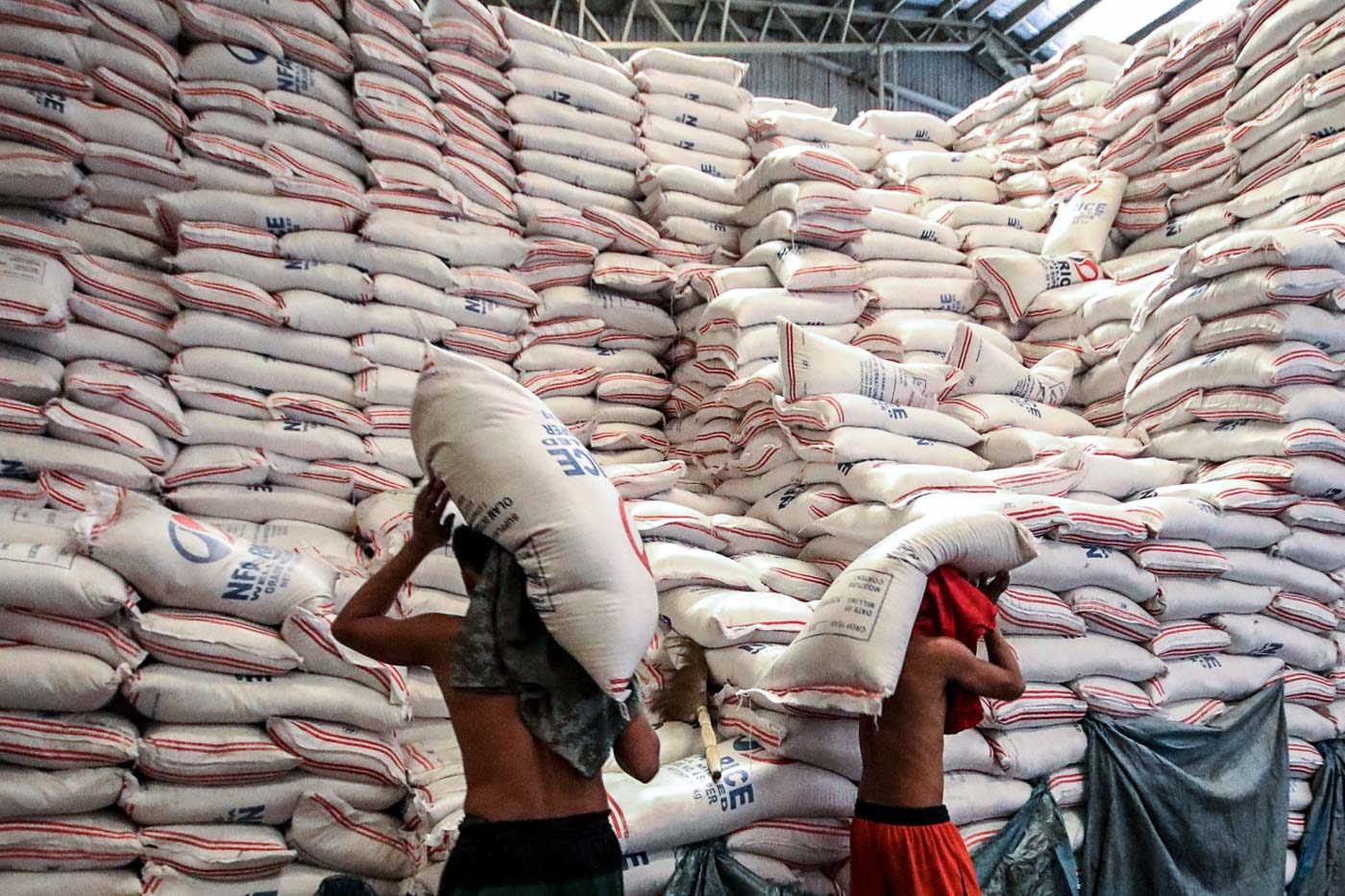SUMMARY
This is AI generated summarization, which may have errors. For context, always refer to the full article.

MANILA, Philippines – The implementing rules and regulations (IRR) of Republic Act No. 11203 or the Rice Tariffication law is set to be signed on Tuesday, March 5, also the same day when the law is scheduled to take effect.
Agriculture Secretary Emmanuel Piñol told reporters in a briefing on Monday, March 4, that while they were able to fast track the drafting of the IRR after holding consultations with farmers in various provinces last week.
“There were actually misgivings initially… towards the end, the stakeholders understood that it’s there, there’s nothing they can actually do about it,” he added.
“[T]hey actually relented when we appealed to them to give the law a chance to be implemented.”
The faster the implementation of the law, will also mean that revenues coming from tariffs will start pouring into the Rice Competitiveness and Enhancement Fund sooner, Piñol reasoned.
During the consultation, Piñol said that farmers only asked that there should be a way to make sure that the farmgate prices for palay, or unhusked rice, will not drop too low that they would be losing money.
According to the draft IRR presented by the National Economic and Development Authority (NEDA) last week, there will be a “preferential attention” given to farmers and cooperatives should they be heavily affected by the the law.
However, the draft also said that a “selection criteria” will also be identified and used for this.
“One of the salient points raised by the stakeholders would be for the NFA (National Food Authority) to be allowed to procure buffer stocks [to last] more than just 15 to 30 days,” Piñol said.
“That’s the way it should be. Because the moment that prices drop, they (farmers) have somewhere to turn to. And I think NEDA will take that into consideration [for the IRR],” he added.
According to the draft IRR, NFA’s buffer stocks will still follow the 15-day and 30-day inventory system until December 2019.
Last year, President Rodrigo Duterte had ordered to have at least 60 days’ worth of buffer stock, higher than the usually mandate of the NFA to always have 15 days’ worth of buffer stocks at any given time and 30 days’ worth of buffer stocks during lean season.
Aside from this, the farmers were also told that there is still a limit in bringing in imported rice as an influx of this would ramp up its price in the world market.
“Imported rice cannot fully penetrate the market, only 15% of that total [rice] requirement at best, actually. That volume will not be able to influence the prices in all parts of the country to the point that farmers will be losing the money,” Piñol said.
However, Piñol said that there may be an issue with implementing the law if the IRR will not be immediately signed tomorrow.
Aside from consultations, the Department of Agriculture and representatives from NEDA also took time to explain the Rice Tariffication law to the farmers in detail.
Piñol noted that this could help clear up the uncertainty from the industry that he said lead to the initial drop in farmgate prices for palay, or unhusked rice.
Data from the Philippine Statistics Authority showed that the average farmgate price for palay posted a slight increment to P19.64 per kilogram (kg) during the third week of February from P19.63 per kg a week prior.
This is, however, lower by 1.46% from last year’s P19.93 per kg when the palay prices were continuously increasing amid the low buffer stocks of the National Food Authority.
Average wholesale and retail prices of well milled rice posted a slight decline by 0.43% to P41.22 per kg and 0.27% P44.63 per kg, respectively. These are, however, higher in a year on year comparison.
Average wholesale and retail prices of regular milled rice also saw a decline by 0.87% to P37.76 per kg and 0.90% to P40.72 per kg, respectively. Similar to well milled rice, both average prices of wholesale and retail prices are higher from a year ago –Rappler.com
Add a comment
How does this make you feel?
There are no comments yet. Add your comment to start the conversation.